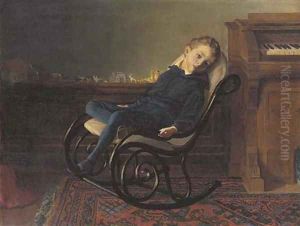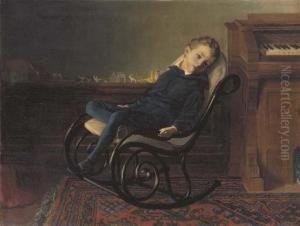Christopher Whitworth Whall Paintings
Christopher Whitworth Whall was an eminent English stained glass artist born on 25 December 1849 in Thurmaston, Leicestershire, England. He would come to play a pivotal role in the British Arts and Crafts Movement, a movement which sought to improve standards of decorative design and handcraft during the late 19th and early 20th centuries. Whall's ethos was steeped in the principles of this movement, emphasizing craftsmanship and the importance of quality materials.
Whall's education in the arts commenced at an early age; he was initially trained as a painter, studying at the Royal Academy Schools. However, his career took a significant turn when he was exposed to the art of stained glass. He sought further training under the tutelage of Alexander Gibbs, a prominent stained glass artist of the time. Whall quickly embraced the medium's unique challenges and possibilities. He was adept at integrating the medieval techniques and aesthetics with his own contemporary sensibilities, which contributed to the revitalization of stained glass art in England.
In 1885, Whall opened his own studio in Hammersmith, London, and began to create windows for various churches across Britain. He was not only an artist but also an educator, teaching at the Central School of Arts and Crafts, which was founded by William Richard Lethaby. His dedication to education and the craft of stained glass led him to author one of the most comprehensive books on the subject, 'Stained Glass Work', published in 1905, which served as a guide for generations of artists.
Whall's work is characterized by its vibrant coloration, use of high-quality glass, and the harmonious blend of pictorial imagery with intricate patterns. Notable works include the windows at Gloucester Cathedral and the Lady Chapel windows at Liverpool's Anglican Cathedral. His legacy is also carried forward by his students, many of whom became prominent stained glass artists, propagating his teachings and style.
Christopher Whall passed away on 23 December 1924 in London, leaving behind a body of work that was integral to the Arts and Crafts Movement and the resurgence of stained glass art during that era. His influence extended beyond his lifetime, affecting the aesthetics and techniques of stained glass work well into the 20th century.

